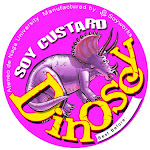Posted last February 21, 2005 in Inquirer news Service, Dennis Arroyo’s article is about some solutions to the Philippines’ economic challenges. He pointed out that according to the Eagle watch briefing of the Ateneo Center for Economic Research and Development, the economy is in great for growth- the stock market and other variables being in particular- yet, there are still major problem areas.
Share telecom growth
The first challenge he cited was the share telecom growth. The growth is led by the services sector (7.3 percent growth), specifically by the hot streak in communications (16.7 percent growth). He therefore believes that the government should democratize these gains by reaping from giant telecom companies out of their text message services. He proposed for a wider array of mechanisms to benefit the lower income classes by engaging ordinary folk in selling cell phone cards. The proceeds of these special edition cards are reserved for pro-poor projects like building more classrooms, buying more chairs and printing, more textbooks.
The intention of the first challenge is actually a good one. It is one of the proposals that no one in the government has never thought of proposing even though they see a lot of growth in the service sector. Thus, alleviating poverty and adding service for the poor should be two of the aspects that the government should focus on. If the service sector will help finance and support the public schools, the rate of employment will be higher and therefore we can make maximize the use of our workforce inside the country.
How can giant companies help in the national poverty concerns? Despite the fact that all other sectors are in great downfall, it is only the service sector that still has the capacity to earn profit. This is mainly because of the telecommunications companies. Two big giants, smart and Globe can actually help by manipulating the cost they earn from the millions of subscribers here in the Philippines. They can basically make the price of each text higher or lower since the consumer’s demand for their services never vary. Having up to 10% from their total profit is never an expense to them but rather an investment for those families who are below the poverty incidence and needs support financially.
Fight tax evasion
Data of the National Statistical Coordination Board states that the deficit of Php186 billion lies below the official target of Php198 billion, which is according to Mr. Arrroyo. Still remains very large. Thus, rating agencies have responded by downgrading Philippine sovereign bonds, making it costly to borrow.
The writer therefore suggests charging correct prices since the massive tax evasion has already caused the fiscal crisis.
I believe that tax collection is a major problem in the country nowadays and increasing VAT is never a solution. It is important to charge the correct prices for the public services like electricity, highways, and light rail fares. It may be a big expense for the government but the benefit will come soon after.
Government corporations therefore must be able to collect prices from the people to provide proper services to the people. Poverty can sometimes be an excuse if the government does not use the country’s money for good. The money belongs to the people so it is rightful to spend it for them and not to the selfish government officials. I therefore conclude that the issue does not talk only about tax evasion but also with tax collection and the way the money is spent.
Agriculture
The agriculture rose by 4.9% in the whole 2004, but slowed down to only1.2%. Primarily, the reason is because harvests are threatened by a new cycle of natural disasters like el niño tide and drought.
The writer points out that the solution to all these is to ensure enough water for crops through cost-effect irrigation, and likewise, diversity away from water-intensive rice to the less demanding vegetables and cash crops.
The proposal of having proper irrigation is excellent. The government should invest mainly on agriculture because I believe that it is our strong point. Having water storage is the best solution to survive drought and el niño phenomenon.
I don’t agree with diversifying from water-intensive rice to less demanding crops. Storms and other catastrophic disasters happen naturally. The people to be blamed are the weather agencies like PAG_ASA and other meteorologists. If timely information are given to these farmers, they could have prepared for such calamities and extraordinary event.
Diversify Exports
Exports are back to double-digit growth: they rose by 19.5 percent as of November 2004. However, they are heavily concentrated in electronics, and this makes the sector vulnerable to swings in the world market. Competing with fully developed countries like Japan and US by means of electronics is like taking a big risk. It is therefore advised to diversify the export mix of the country. We must focus on agriculture because primarily, Philippines is an agricultural country. Let us bring back the times when we were the ones who lead in exporting rice-and not our “students” (Thailand and Vietnam) because today, we are mainly relying on them by means of rice. It was not too long ago when factories here suffered from the slump in global demand. The challenge then is to put more eggs in other baskets.
Promote Direct Investments
Portfolio investments are actually those that come easily but are easily spent. It is not necessary to focus or to base on this data, but rather to the direct investment. The writer cited that to promote direct investment means making the country more competitive particularly by filling the gaps in infrastructure. The effort focused on the Clark and Subic area, which the government is trying to develop into the logistics hub of Asia.
Personally, I only partly agree with the writer’s proposal. Direct investment is good but it somehow has ill-effects, Let the Philippines first focus on its own export and ideas and limit direct investments since these investments benefit more the investors and never the country as a whole. Mining industry, for instance, may let us earn a lot of national income but it will “rape” our natural resources. Let us first focus in exporting agricultural products and invest more in developing it.
Offer cheap imports
In 2003 the inflation rate was 3.1 percent. Then in 2004 the official target range was 4.5 to 5 percent inflation. But it actually hit 5.5 percent last year, likely because of election spending. In fact it even reached 7.9 percent in December 2004.
The challenge, according to Mr. Dennis Arroyo is to find ways to lower the price for other items as to provide some relief. We must import more rice from Vietnam and Thailand and medicines from India since it is just half the price of Philippine rice and medicines respectively.
With that statement, I certainly do not agree. Importing more products means killing rice and medicine companies here in the Philippines. Consumers have more alternative sources with lower price. This has a great impact on such companies and probably it may even cause the Philippines to rely predominantly on these countries in the succeeding years by means of such products. Therefore, this will lead us to a more complicated situation in the future.
Widen scope of outsourcing
Then there's the unemployment rate, which hovers at a formidable 11.8 percent. The state does not have the funds to generate all these jobs but it can set the direction for the private sector.
To solve the problem, the writer proposed to limit overseas worker who goes to other countries but still be an overseas worker even by just staying in the country. They can just therefore e-mail their outputs to corporations in New York, London, Melbourne, and Vancouver. They can prepare and e-mail financial statements, marketing analysis, industry overviews, software, animation, even songs. It's like being an overseas worker without leaving the Philippines.
I think the proposal is very unique. Though, I know that no country (or company) will ever take risks of employing an invisible worker. No matter how good Filipinos works can be, companies are less assured because they cannot deal with their workers properly. Communication is really a big problem in this suggestion.
Identify small enterprise winners.
According to Mr. Arroyo, to create jobs for poorer classes, it is vital to diffuse technology to the rural sector, particularly to micro, small and medium enterprises.
I agree with the writer. Agro-processing activities can truly create a legion of jobs. It is necessary for the government to invest on rural businesses because it will be a help in the economy. With this strategy, local supply can keep up with demand abroad. The state would do well to identify market opportunities and empower the poor to seize them.



.jpg)










.jpg)





